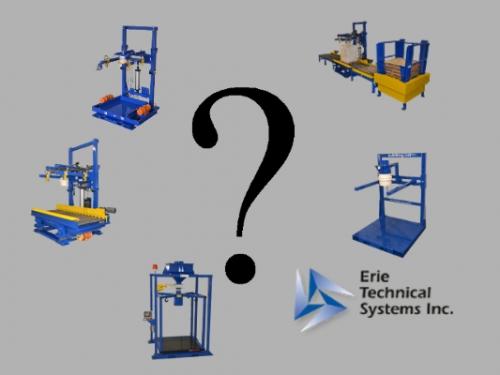Rate of Filling
The rate of filling is the single largest factor that determines the design and cost of a bulk bag filler. The filling rate is the number of bulk bags that need to be filled in an hour. Simply put – the more bulk bags per hour the more automated and expensive the machine.
Each fill cycle consists of filling time and setup time. The filling time is the time that the product is flowing into the bag. Since the filling time is fixed, the equipment design can reduce cycle time by improving the setup time. The setup time is determined how fast the operator can remove the filled bulk bag and prepare the next bag for filling. This normally requires the operator to add a new skid, attach the four bag loops, attach the bag spout and start the cycle. A well-designed bulk bag filler will reduce the time required for these operations through design and automation.
Bulk Bag Size and Type
The size and style of a bulk bag can dictate the type of bulk bag filler being used. Bulk bags are flexible and must be supported during filling process. Most commonly bulk bags are square and are held up using bag loops located in the four corners. The bag loops can be held using two rods, or the four corners can be held independently. The dimensions of bulk bags can vary greatly, but a typical size is 44" wide x 44" deep x 60" tall (112 cm x 112 cm x 150 cm). If the machine must fill assorted sizes of bulk bags, the equipment must be designed for quick changeover.
The top of the bag will either be an open top or will include a filling spout. In an open bag the filling can be done through a simple tube. For applications where dusting or external contamination is an issue, a bag with a spout should be used. A typical spouted bulk bag will have a 14" diameter (36 cm) spout. The spout is sealed around the fill tube either with a clamp or by using and inflatable seal. When filling quickly, provisions must be made for the displaced air to leave the bag while the bulk material is being added. Use of a spouted bag also permits pneumatic inflation of the bulk bag prior to filling which ensures all the bulk bag is filled.
Tim Porco - Erie Technical Systems Inc. - timp@erietechnicalsystems.com
Product to be Packaged
The final item to consider when buying a bulk bag filler is the material being placed in the bag. Product density, flow characteristics and angle of repose are all crucial factors. For high density applications, the bulk bag filler must be structurally sound. For low density materials vibration can be added to pack the material and maximize the amount of material in the bulk bag. Vibration can also be used to flatten out the cone on materials with a high the angle of repose. Again, this allows for filling more material in each bulk bag.
Once a review of these three key areas has been made, selection of a properly designed bulk bag filler with the proper features should be straightforward.

